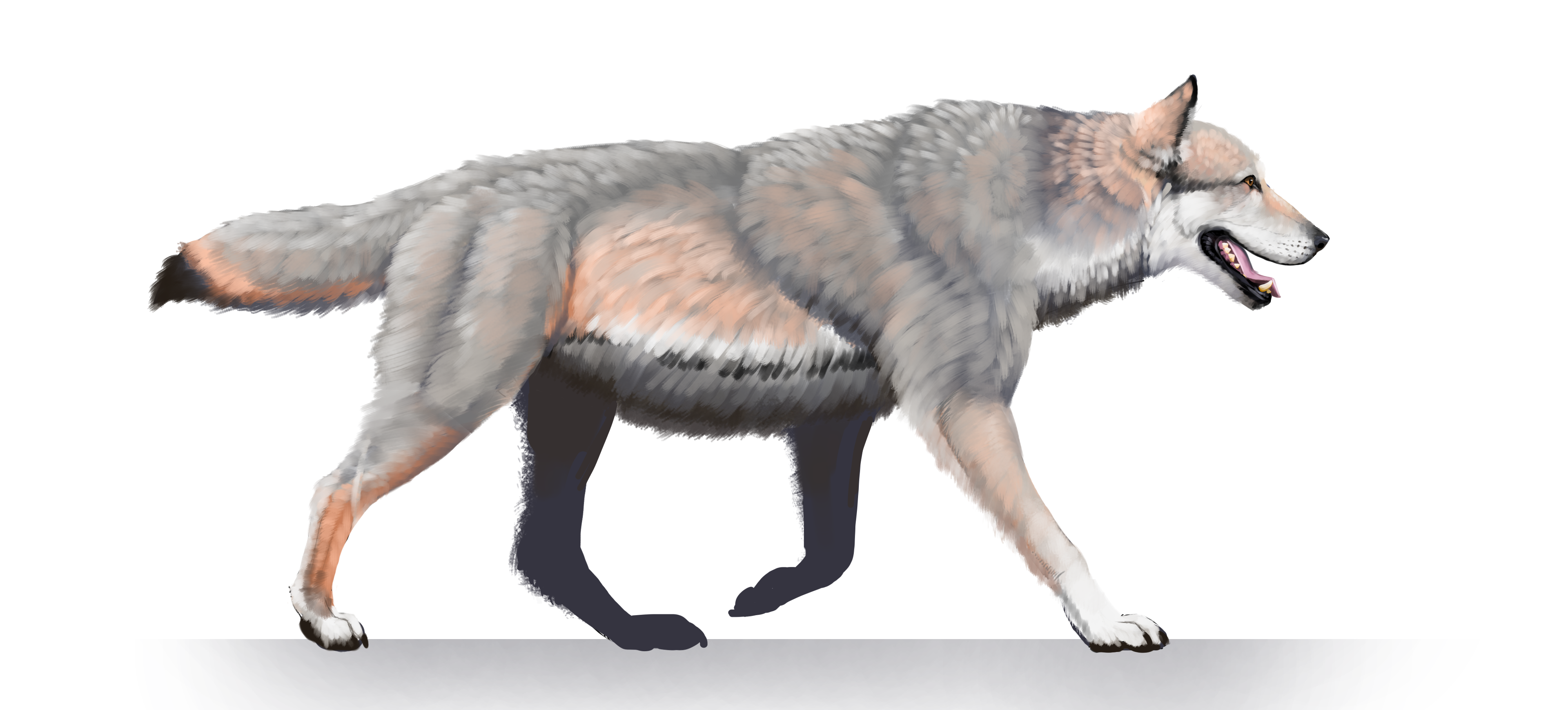Blog

#bioPGH Blog: Dire Wolf Dilemma
 A resource of Biophilia: Pittsburgh, #bioPGH is a weekly blog and social media series that aims to encourage both children and adults to reconnect with nature and enjoy what each of our distinctive seasons has to offer.
A resource of Biophilia: Pittsburgh, #bioPGH is a weekly blog and social media series that aims to encourage both children and adults to reconnect with nature and enjoy what each of our distinctive seasons has to offer.
About two years ago, we chatted here on the blog about a company working to bring back the wooly mammoth. This week, that same company exploded back into headlines with the claim that they had “de-extinctioned”…a dire wolf? A wild canid species that went extinct around 10,000 years ago? I will admit, I have quite a few thoughts here. Is the premise interesting? Very. Kind of cool? Admittedly. Practical? Well…why don’t we take a closer look at this whole situation?
As a bit of background, dire wolves really were an ancient canid that lived roughly 125,000 – 10,000 years ago. They ranged from as far south as Chile and Bolivia in South America to at least as far north as Alberta, Canada; they would have been found in Pennsylvania, as well as across most of the US. Their diet primarily consisted of megafauna prey like bison and extinct Pleistocene animals like ground sloths, camels, and horses. Dire wolves were generally larger than gray wolves, with perhaps some overlap between the smallest dire wolf females and the largest gray wolf males.

Artist's rendering of a dire wolf. National Park Service.
Now, I do love wildlife — both the cute and fuzzy and the slimy and squishy. And I am indeed fascinated by these prehistoric predators, but I still have concerns with the situation and the motivation behind the science.
First, we need to clarify the headlines: the pups are not really dire wolves. The company made 20 edits to 14 genes of the gray wolf genome to give these pups some dire wolf-y genes. Researchers then inserted the modified gray wolf cells into domestic dog eggs to be carried by surrogate female dogs. Of 250-300 embryos transferred to six surrogates dog moms, four pups were ultimately born, and three of those pups survived. Though this was an impressive use of CRISPR and cloning technology, it’s not the same as “bringing back” an extinct species.
Second, the company has shared excitement for the "return" of genes that haven't existed in thousands of years, but I do have doubts that the genes of these pups would ultimately be helpful for the genetic diversity of a completely different species. On the one hand, we know that the conservation pressures on gray wolves are mostly due to human-wildlife conflict — that won’t be solved by genetics. Plus, throwing around genetic diversity curveballs into a population could easily cause hybrid inviability or outbreeding depression (a decrease in reproductive success of hybrid offspring due to the disruption of co-adapted gene complexes from the parents.)
Third, my biggest concern with "de-extinction" efforts is that there is no point in bringing back a species if the threat or situation that led to their demise in the first place is still present. For example, the dodo bird on Mauritius Island ultimately went extinct because humans introduced mammalian predators that decimated the flightless birds' ground nests. Those predators are still on the island, so bringing back the dodo would be pointless. Or consider the number of species that have succumbed to habitat loss. We could bring back as many as we want, but if there is no habitat, there is no habitat. Dire wolves went extinct around 10,000 years ago, most likely from a combination of a changing climate and the extinction of their megafauna prey. I would rather focus on preserving what we have rather than bring back something whose world doesn't exist anymore.
Not to mention, our existing wolves worldwide already face the conservation pressures of human-wildlife conflict. Earlier this year here in the US, Montana debated bills about wolf hunting and trapping; Washington state noticed a decline in total wolf population (even with an increase in pack number); Colorado officials are trying to delist wolves to remove conservation protection; in North Carolina, a lone surviving population of wild red wolves only numbers in the low 20s (depending on this year’s pups) — just to give a few quick examples. Here in Pennsylvania, our coyote population is quite robust largely because our own wolves were extirpated (driven to a local extinction) a long time ago. Since protecting our own gray and red wolves has been a struggle, perhaps a long-extinct wolf that was even larger and has more potential for human-wildlife conflict doesn’t need to be our first priority.
But I will fully admit: it's still a fun, flashy story. But it's more splash than substance. If it inspires a fascination in science, that is a positive outcome; but I also don’t want this to spook someone who is already wary of new technology. But I suppose overall, regardless of whether an animal or plant had some help in a lab, the living things in our wild world need us to be good neighbors, to admit that we are fellow travelers in life. We can be supportive or destructive, that choice is ours. So let’s choose to have a positive, regenerative impact on the wild world around us!
Note: since federal science funding has been in the news recently, it is worth mentioning that this is not the kind of project where federal tax dollars for research go. You don't have to worry about that. Colossal Biosciences is a commercial, for-profit entity. I dug through USASpending.gov and I didn't find any record of this company receiving any federal funding. Rather, Colossal Biosciences has a variety of investors, and inked a deal in February to begin producing a docuseries on the company and its work.
Continue the Conversation: Share your nature discoveries with our community by posting to Twitter and Instagram with hashtag #bioPGH, and R.S.V.P. to attend our next Biophilia: Pittsburgh meeting.
Images: Cover, gray wolf, Fish and Wildlife Service

